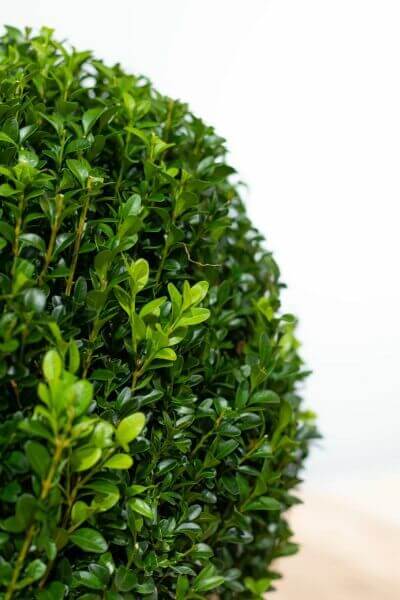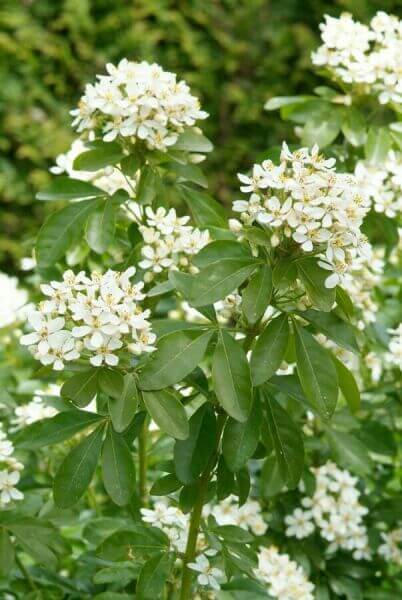Best Hedging Plants For Park Landscaping
Best Hedging Plants For Park Landscaping
Blog Article
Hedge Plants For Summer Color
Boost your garden's allure with lush hedge ranges such as Yew (Taxus), Thuja, Laurel, Photinia, and Bamboo, commemorated for their structural integrity and environmental advantages.
Yew and Thuja offer evergreen coverage and winter season resilience, while Laurel provides quick growth and broad, aromatic leaves.
Photinia adds seasonal beauty with its lively red foliage, and Bamboo provides a low-maintenance, peaceful atmosphere.
These hedges improve air quality, minimize sound, and create tranquil, private spaces.
Correct planting, spacing, and maintenance make sure vigorous growth and environmental consistency.
Explore how these rich ranges can raise your garden's charm and well-being.
Key Takeaways
Transform Your Garden With Lush Hedge Ranges
- Select Yew for its dense, evergreen development and unparalleled durability.
- Choose Laurel for its fast development and broad leaves, guaranteeing quick privacy.
- Select Photinia for its dynamic seasonal foliage, which turns a striking dark red.
- Make use of Bamboo for a low-maintenance, winter-hardy hedge with aesthetic appeal.
- Area plants 2-3 per meter and prune regularly for ideal development and health.
Popular Hedge Plants
When transforming a garden with lush hedge varieties, it's vital to think about popular hedge plants such as Yew, Thuja, Laurel, and Photinia due to their distinct characteristics and benefits.
Yew (Taxus) is highly esteemed for its durability and dense, green growth, making it a prime option for withstanding landscapes.
Thuja is kept in mind for its evergreen foliage and robust winter season resilience.
Photinia adds seasonal vibrancy with red leaves that darken over time, creating dynamic visual appeal.
Laurel uses quick growth and aromatic, broad leaves, perfect for quick personal privacy.
Furthermore, Bamboo is an excellent choice for atmosphere, using a low-maintenance, winter-hardy alternative that enhances the garden's visual with its classy, swaying walking sticks.
These selections accommodate a variety of horticultural needs and preferences.
Benefits of Garden Hedges
Garden hedges offer a wide range of benefits, making them an important addition to any landscape. These natural barriers are affordable to execute and provide substantial wind defense, improving air circulation and adding to noise reduction. The thick foliage of hedges like Thuja and Beech guarantees privacy by blocking visibility, producing a serene and remote environment.
Hedges likewise play a vital function in microclimate regulation, supplying a stable environment that cultivates plant growth and minimizes temperature level changes. Their intricate leaf structures filter contaminants, enhancing air quality and contributing to a much healthier garden environment.
Furthermore, hedges master sound reduction, taking in and deflecting acoustic waves to lower ambient noise levels. This double functionality of offering both visual and acoustic personal privacy boosts the general harmony and aesthetic appeal of any garden.
Planting and Upkeep Tips
For a successful hedge, precise preparation of the planting location is crucial. Guarantee the soil has correct pH and drainage to support strong root development.
Area the plants appropriately for the chosen types. Water the hedge regularly during its initial growth stage, adjusting as required with seasonal changes.
Implement a methodical bug control and disease prevention technique, utilizing chemical or natural treatments when required. Routinely check for aphids, termites, and fungal infections.
Apply mulch to retain moisture and suppress weeds. Seasonal pruning promotes dense growth and air flow, vital for plant health.
Following these standards will assist you cultivate a lively, well-maintained hedge that improves the charm of your garden.
Spacing and Cutting Standards
Spacing and Cutting Guidelines
Appropriate spacing and cutting are important for cultivating healthy, aesthetically appealing hedges. Sufficient spacing guarantees each plant gets adequate nutrients, light, and airflow.
Follow these guidelines for optimal hedge maintenance:
- Spacing: Position hedge plants 2-3 plants per meter to encourage robust development.
- Pruning Techniques: Routine pruning is important for preserving desired hedge height and shape. Trim new development in summertime and cut down older wood during winter.
- Seasonal Care: Adjust cutting schedules and methods according to seasonal requirements to ensure plant health.
- Hedge Height: Regularly screen and trim to maintain the desired hedge height and attain consistent aesthetic appeals.
Following these steps will guarantee your hedge grows, improving both the appeal and functionality of your garden.
Picking the Right Hedge
Picking the Right Hedge
Selecting the proper hedge includes evaluating aspects such as fully grown height, foliage density, and environmental strength. Effective hedge plant selection needs understanding each types' development characteristics and site-specific flexibility.
For example, Yew (Taxus) uses outstanding longevity and thick growth, while Thuja is significant for its winter strength. Additionally, thinking about maintenance requirements is vital; fast-growing species like Laurel or Privet need regular cutting, whereas low-maintenance options like Bamboo or Ivy may be more suitable for those looking for minimal maintenance.
Ecological elements such as soil type, light schedule, and moisture conditions need to also direct the choice process. This mindful approach guarantees the picked hedges will flourish, offering both visual and functional benefits to the garden landscape.
Delivery and Planting Suggestions
To ensure your hedge plants flourish, they need to be provided by specialized carriers and planted promptly upon arrival.
Follow these necessary actions for successful planting:
- Soil Preparation: Improve the soil with organic matter to enhance drainage and nutrient content.
- Planting Depth: Produce a trench twice the width and equal to the depth of the root ball.
- Watering Techniques: Water completely after planting, keeping the soil consistently wet however not filled.
- Mulching: Use a layer of mulch to maintain wetness and reduce weeds.
Client Support and Service
Offered the important role of timely support in horticultural pursuits, our customer assistance team is available 6 days a week through telephone, email, and social media to use professional guidance and quickly attend to any concerns. Their commitment to quick response times makes sure consumer fulfillment by solving questions related to plant health, optimum planting techniques, and maintenance schedules.

6 days a week
Six days a week
This extensive support group, reinforced by an excellent 9.3/ 10 client ranking, highlights our dedication to enhancing the gardening experience for each client.
Frequently Asked Concerns
For How Long Does It Take for Hedge Plants to Establish?
Hedge plants generally need one to three years to become more info fully established, with the exact duration differing by species and growing conditions.
Reliable care during this crucial duration is vital for robust development. Constant watering, watchful weed control, and suitable fertilizer application are critical in promoting strong root development.
For example, fast-growing types like Laurel might develop faster, while slower-growing varieties such as Yew may take longer. Persistent upkeep accelerates the facility process, resulting in dense and healthy hedges.
What Are the very best Hedge Plants for Personal Privacy?
The question of the very best hedge plants for personal privacy involves assessing evergreen and deciduous alternatives.
Evergreen hedges like Thuja, Laurel, and Cypress supply year-round coverage, guaranteeing continuous privacy.
On the other hand, deciduous hedges such as Beech provide seasonal privacy, shedding leaves in cooler months.
Key maintenance tips for personal privacy hedges include regular cutting, fertilizing in spring, and correct spacing-- typically 2 to 3 plants per meter.
In addition, consistent watering and persistent weed removal are vital for promoting healthy, dense growth.
Can Hedge Plants Bring In Wildlife to My Garden?
Yes, hedge plants can attract wildlife to your garden by supplying necessary benefits like shelter, food, and nesting websites, thus enhancing local biodiversity. For example, yew, holly, and laurel are exceptional for bring in birds, while ivy supports a range of insects.
Nevertheless, it's important to note that there are some downsides, such as increased maintenance to handle bugs and routine upkeep. Thoroughly picking and keeping hedge varieties can assist balance these downsides and benefits, ultimately cultivating a lively and sustainable ecosystem in your garden.
Are There Any Blooming Hedge Plants Available?
Yes, there are flowering hedge plants readily available that can improve the beauty of your garden.
For instance, Elaeagnus, also called Olive Willow, produces aromatic white flowers in the fall, adding a touch of sophistication.
Photinia, another popular choice, showcases vibrant red leaves that develop into a rich green, developing a dynamic visual result throughout the seasons.
To guarantee these plants grow, it's important to practice proper pruning strategies and seasonal maintenance, such as cutting new growth in the summer season and cutting down in the winter.
These measures will help maintain the health and visual appeal of your blooming hedges.
How Do I Prevent Bugs in My Hedge Plants?
To prevent pests in hedge plants, utilize natural bug control techniques and keep proper hedge care. Introduce helpful insects like ladybugs, which take advantage of damaging pests, to produce a well balanced environment.
Regularly check your hedges for indications of infestation and immediately get rid of any afflicted parts to avoid the spread. Ensure the health of your hedges by applying balanced fertilizers and offering sufficient water.
Use mulching to maintain soil wetness and correct spacing to lower plant tension and promote robust development. These practices jointly assist in decreasing pest problems and preserving a healthy hedge.
Conclusion
In essence, selecting the best hedge varieties such as Yew, Thuja, and Laurel can transform any garden into a peaceful haven. These plants provide year-round plant, boost visual appeal, and deal practical benefits like noise decrease and wind security.
Appropriate planting techniques, accurate spacing, consistent watering, and seasonal trimming are vital for optimum development.
Dependable delivery services and skilled client support ensure a smooth experience from purchase to planting, making it simpler than ever to elevate your outside space.
Garden hedges offer a plethora of advantages, making them a valuable addition to any landscape. These natural barriers are cost-effective to carry out and offer significant wind security, enhancing air blood circulation and contributing to noise reduction. The dense foliage of hedges like Thuja and Beech ensures personal privacy by obstructing exposure, creating a secluded and serene environment.

Pruning Strategies: Regular pruning is important for preserving wanted hedge height and shape. Trim new development in summer season and cut back older wood during winter.
Report this page